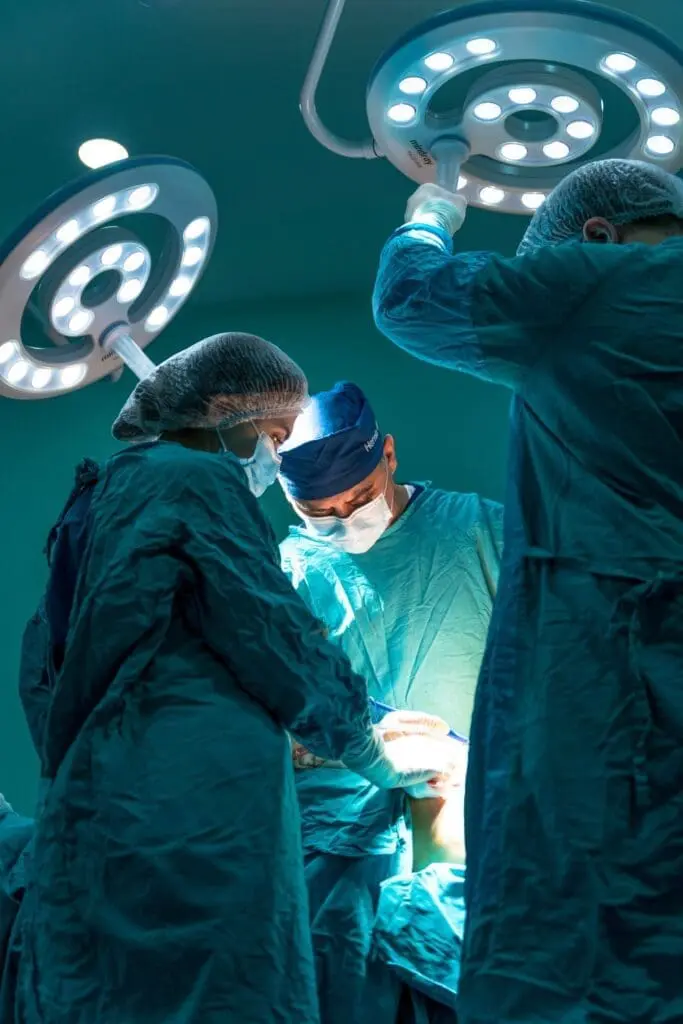
A surfing accident left Daniel with a life-changing spinal cord injury. Thanks to the intervention of intensive physiotherapy, Daniel has made remarkable progress in improving his strength and function to maximise his independence and quality of life.
Daniel suffers a traumatic spinal cord injury
A fit man in his mid-50s, former NRL coach Daniel was bodysurfing with his brother during a family holiday on the NSW Central Coast, when he was dumped by a wave and hit his head on the seabed. Daniel became unconscious, and his brother dragged him out of the water.
Daniel had suffered a cardiac arrest. He had no pulse and had stopped breathing. Two off-duty paramedics came to his aid and immediately began cardiopulmonary resuscitation (CPR) and restored his heartbeat using an automated external defibrillator (AED).
“It would’ve been harrowing for my family to have seen me on the beach in a near-death situation,” says Daniel.
Daniel was airlifted to Royal North Shore Hospital (RNSH) which is a designated referral centre for people in NSW with acute traumatic spinal cord injuries.
When he regained consciousness a few days later in the Intensive Care Unit (ICU), he was aware of the seriousness of his injury as he “basically couldn’t move anything”.
Every year in Australia there are 380 new incidences of spinal cord injuries (SCI), necessitating specialised physiotherapy to address their unique complexities and maximise the potential for recovery.
The doctors told Daniel he sustained a compression injury to his C3 and C4 vertebrae and spinal cord. Injuries at this level can cut off the brain’s connection to the spinal cord which contains nerves that run in between the vertebrae leading to different areas of the body. The result is quadriplegia, or paralysis of the arms, trunk and legs. The mid-cervical nerves also affect the diaphragm and the ability to breathe, and physiotherapy was urgently needed to help Daniel clear his lungs.
While in ICU, Daniel said the doctors and nursing staff gave “top notch” medical care and provided support to him and his family, including his wife Natalie who visited daily, by being open and answering any questions they may have. After three weeks in ICU, Daniel was transferred to Ward 7E at RNSH.
Intensive physiotherapy commences
Within a month of his accident, Daniel was invited to participate in The Early & Intensive Spinal Cord Injury Motor Training (SCI-MT) trial.
Professor Lisa Harvey and Associate Professor Joanne Glinsky are the coordinating principal investigators at the Kolling Institute for SCI-MT trial which aims to determine if an intensive type of physiotherapy administered within a few weeks of a spinal cord injury, improves strength and function to maximise independence and quality of life.
“There is evidence to indicate that the spinal cord is like a brain and has the potential for plasticity to remould itself if given the right training environment,” says Professor Harvey. “Physiotherapy is a key part of rehabilitation for people with a spinal cord injury, but until now, there are very few large clinical trials to guide practice. We are testing a very specific type of physiotherapy administered early and administered in very high dosages.”
This 5-year trial will be the largest trial yet conducted around the world to test any form of physiotherapy. It involves 220 participants and more than 200 therapists, assessors and healthcare professionals from Australia and 6 countries across Europe. It is being conducted in 4 different languages. The project aims to determine the effectiveness of a 10-week intensive form of physiotherapy administered soon after injury. If successful, the intervention could change the lives of people with SCI. The results will be published in late 2025.
Daniel spent an additional two hours a day in physiotherapy, five to six times a week when training as part of the SCI-MT Trial.
Remarkable progress after 10 weeks
“Before the trial, I had little movement and needed total assistance,” says Daniel “but at the end, I had made significant progress compared to what people say my injury should have had.”
Daniel has regained movement in his right arm, and he can hold a drink or a fork, feed himself and scratch his nose. While his left hand is still numb, he can stand and walk a short distance supported by a frame.
He is very appreciative of having the rare opportunity to be part of this trial and says that the physiotherapists at RNSH are “good eggs”, even though they pushed him to his limits during training sessions. However, he says it taught him the importance of training and building his mental resilience: all part of his recovery.
One of his aims during his recovery was to go back to work for the Sydney Roosters, and he has now returned to his role as Head of Recruitment, working from his new and accessible workspace.
Accepting that he will never completely recover from his injury, Daniel is focusing on what he can do and the remarkable progress he is achieving through continued physiotherapy. He hopes that the trial will prove the effectiveness of this special type of intensive physiotherapy so in the future all people with SCI will have the same opportunity to maximise their recoveries as he had.
If you would like to support patients with life-changing injuries at the spinal cord injury unit to regain their independence, please make a donation here.
